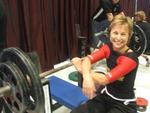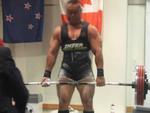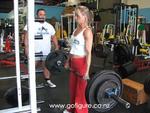| Despite this, there is something very special about powerlifting. I can remember my introduction. I was a promising Rugby League (League) player who had just started using weights for my sport. I watched a few guys doing squats one day in the gym. I asked them if I could join in. Pretty quickly I was breaking national records in training. I was hooked, I had the bug. I still played League that year but my desire was now to be a competitive powerlifter. The initial attraction is hard to describe. I think that the process of continually becoming stronger and measuring this in a competitive format was what did it for me. I also loved developing muscle and I quickly discovered the correlation between strength and muscle. Powerlifters are almost universally a great bunch of guys and girls. They love doing their best but they also love seeing other succeed. This element also appeals to me greatly. It is an individual sport with team sport camaraderie. First steps |

The fitness site for today's active figures!
Saturday, April 27, 2024




